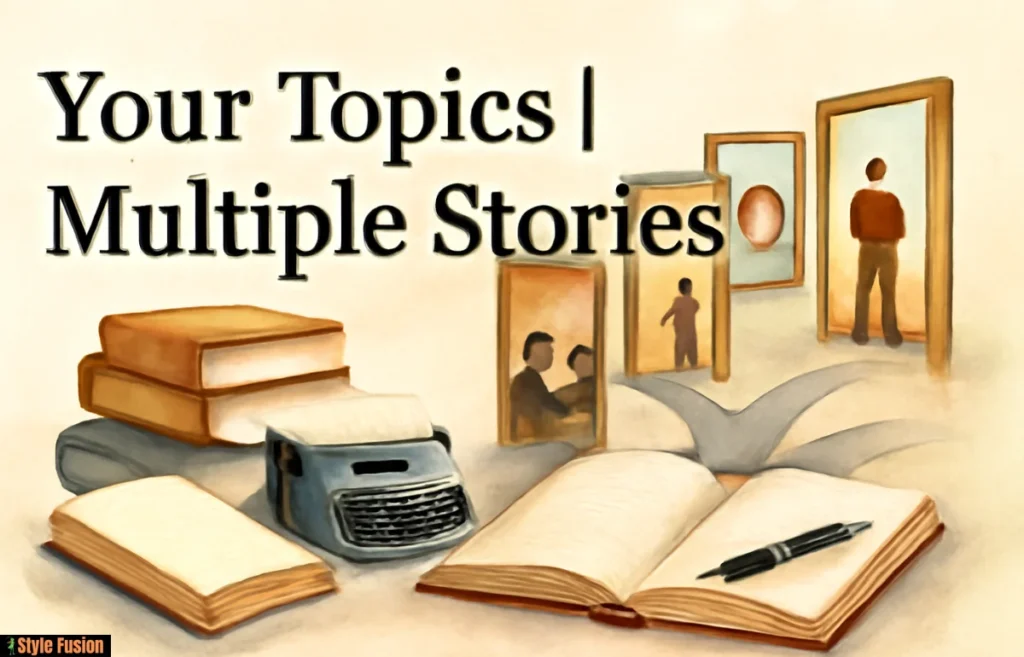
In the world of creative writing and storytelling, your topics | multiple stories represent a powerful method for exploring themes in diverse ways. This approach not only allows for deep exploration of a central idea, but also offers readers a multifaceted experience that enriches the narrative. Whether you’re a beginner or an experienced writer, understanding how to use multiple stories within a single theme can enhance your storytelling skills and keep your audience engaged.
Understanding the Importance of Themes in Storytelling: Your Topics | Multiple Stories
Themes are the backbone of any good narrative. They provide structure and meaning, giving depth to the characters, plot, and even the setting. When you approach your topics | multiple stories, the key is to center each story around the same theme, yet allow each narrative to explore it from a unique angle.
What Is a Theme?
A theme is the underlying message that permeates all of your stories; it is more than just a subject. For example, a theme of “love” might manifest in different ways across various stories. One might focus on romantic love, another on familial love, and yet another on self-love. This provides a broader understanding of the theme and allows your audience to relate to it on multiple levels.
Selecting Topics for Your Stories
When selecting topics for your topics | multiple stories, think about what resonates most with you as a writer. The key is to choose themes that you can deeply explore and that will allow for various interpretations.
Steps to Brainstorm Your Ideas
-
List your interests: Begin by jotting down the themes that naturally draw your attention—whether it’s love, identity, adventure, or any other subject that holds meaning for you.
-
Reflect on personal experiences: Your own life can provide a wealth of material. Think about pivotal moments that shaped your perspective. These experiences can add authenticity to your stories.
-
Consider current events: Often, social issues or global topics can inspire powerful narratives that resonate with a wide audience.
Weaving Multiple Stories Around One Theme
Once you’ve chosen your topic, it’s time to start crafting multiple stories that will explore the theme from different perspectives. This step is vital to ensuring that your topics | multiple stories remain dynamic and engaging.
Common Themes and Their Manifestations
Let’s take a closer look at how themes like love, identity, and courage can be expressed in different ways through storytelling:
Theme: Love
-
Romantic Love: A love story between two people whose bond is tested by external circumstances, such as distance or time.
-
Familial Love: A narrative that focuses on the relationship between family members, perhaps a tale of reconciliation between a parent and child.
-
Self-Love: A character’s journey toward self-acceptance and understanding, often after facing personal struggles or challenges.
Theme: Identity
-
Cultural Identity: A story about a character grappling with their heritage while trying to fit into a new environment.
-
Gender Identity: A narrative exploring the struggles of discovering and embracing one’s gender identity, especially in the face of societal norms.
-
Digital Identity: A modern exploration of how social media and technology shape one’s sense of self.
Theme: Courage
-
Overcoming Fear: A character’s internal battle against a longstanding fear or phobia, culminating in personal growth.
-
Standing Up for Justice: A story centered on activism, showing a protagonist’s commitment to fighting inequality and injustice.
-
Taking Risks: A narrative about an individual stepping out of their comfort zone to pursue a passion or dream, despite the risks involved.
Bringing Your Stories Together
After creating multiple stories, think about how to present them cohesively. Your topics | multiple stories can be organized in several ways to maximize their impact.
Structural Ideas for Presenting Multiple Stories
-
Anthology: Compile your stories into a collection with an introductory piece that ties everything together.
-
Interconnected Narratives: Write a novel where stories intersect, allowing characters to appear in multiple contexts, enriching the overarching theme.
-
Series of Short Stories: Craft a series of standalone stories that all contribute to one central theme.
The Importance of Voice in Storytelling
When writing multiple stories around the same theme, it’s crucial to give each character their own distinct voice. This ensures that each narrative feels unique, even though the theme remains constant. A varied approach to character development can create a more nuanced and compelling exploration of the theme, making the experience richer for the reader.
Conclusion: Mastering Your Topics | Multiple Stories
By understanding the power of your topics | multiple stories, writers can create compelling, multi-dimensional narratives that resonate with readers on a deeper level. Whether you’re writing an anthology, a series, or a single novel with interconnected stories, embracing the theme and allowing each story to explore it from a different perspective is a powerful way to engage your audience. So, start brainstorming your topics, dive into the creation of your stories, and watch as your ideas unfold in new and exciting ways!
Learn about Ftasiafinance Technology

Dear Readers, I’m Salman Khayam, the writer and founder of this blog, dedicated to bringing you valuable insights across a variety of topics. From dental and mental health to personal development, beauty, skincare, hair care, nutrition, fitness, and exercise, my goal is to empower and inspire through well-researched, engaging content.
